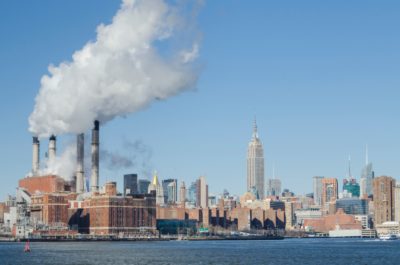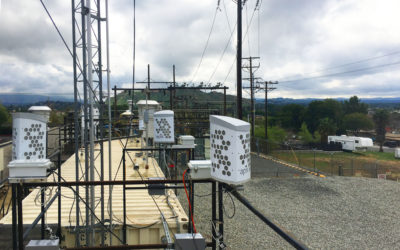By Kaitie Warner and Marisa Dixon
California has solidified its place as a destination location for its fabulous arts and entertainment scene, beautiful rolling landscapes and yearlong warm and sunny weather. Unfortunately, it’s also known for its abysmal air quality.
The Bay Area, one of the most desirable places to live, is also home to numerous oil refineries throughout Contra Costa and Solano counties, giving rise to its label “Refinery Row”. Many people are surprised to find that Los Angeles County is the number one producer of oil west of Houston, TX. Less surprising is that most of the people affected by the ambient pollution in these, and other cases, are the low-income and minority communities in those areas.
The good news is that California has new legislation in effect to remedy this problem, by mandating localized pockets of community and “fence line” monitoring systems in disadvantaged communities surrounding industry polluters.
New Law
In 2017, then-California Governor Jerry Brown signed into law Assembly Bill 617 (C. Garcia, 2017), an air-quality monitoring and pollution-reducing bill, with a focus on community health. The bill can be broken down into five main components, or directives: community-level air monitoring, community specific emission reduction plans, review of pollution control technologies, enhanced emission reporting requirements, and increased penalties for polluters. The bill is designed to incorporate community involvement with regulators to reduce the affect of pollutants on “high priority” areas.
As of October 2018, a number of communities were identified, ranked and allocated grant money to begin community-level air monitoring programs. Areas identified are mandated to deploy networks of low cost, high accuracy air quality monitors that can collect data over time to be used in risk assessment in specific areas, and aid in the planning for reducing the effect of air pollution on disadvantaged communities. Areas with the highest risk require source polluters to install fence line monitoring systems around their facilities that will be required to report real time air emissions.
Why Community Monitors
On the surface, these requirements seem redundant; regulations already exist that require the use of Federal Reference Monitors (FRMs). Federal monitoring has a broad scope and data is reported at a city-wide level. This type of reporting ignores localized pockets of air pollution that might only be present in a certain neighborhood. But adding more FRMs to solve this problem is, by anyone’s definition, prohibitively expensive. Equipment costs alone can be hundreds of thousands of dollars per monitor, added to the requirements for maintenance and calibration, the costs become astronomical.
In contrast, community monitors, known as near reference monitors, a term that covers a large span of different types of air quality sensors, can be calibrated to closely mimic the output of federal monitors, but at a fraction of the cost. This reduced cost makes it possible for multiple monitors to be strategically placed throughout the community collecting hyper-local air quality data.
Some locals have already identified the need for these community-level monitors. An 18-year-old Cambridge High School student, Keishaun White, has embarked on a project to monitor air quality on Fresno Unified high school campuses in the hopes of providing students and faculty with real-time air quality information specific to each campus.
White’s project is an example of how AB 617 can be applied in California. Communities like Marin County, a candidate for funds because of the county’s unusually low life expectancy, are the focus of the bill. A full list of cities and counties included in the project can be found here.
How Apis Can Help
Apis, Inc, is an air quality data provider, headquartered in Grants Pass, OR, that provides everything required to create a community air quality monitoring network. Apis’ service model is uniquely fitted to this project, because its monitors can target multiple pollutants while minimizing the costs of both installing and maintaining the stations, as well as processing and reporting the data gathered. Lower costs mean that a larger network of stations can be installed, allowing the project to reach more communities and provide more accurate data directly to citizens and lawmakers alike.
Are you a citizen or lawmaker who would like to see an air quality monitoring station in your community? You can contact Apis here.




